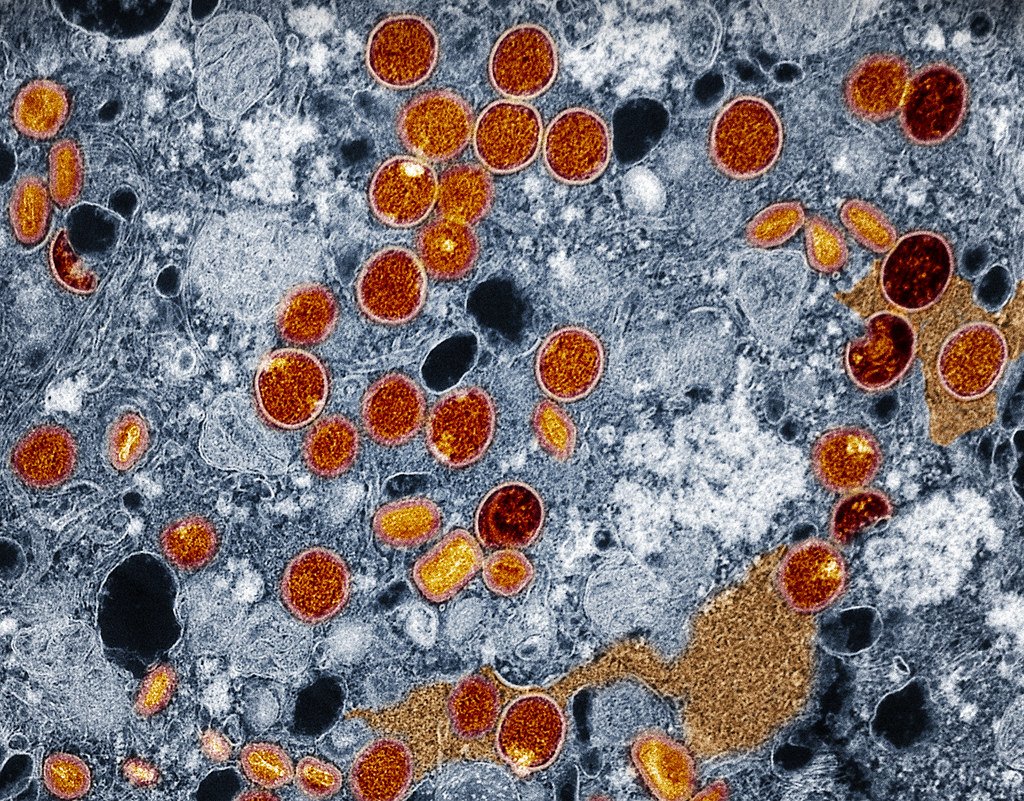Imagine waking up one morning to find that someone has broken into your house, not to steal your valuables, but to turn your entire home into a factory for producing more burglars. They’ve rewired your security system, reprogrammed your appliances, and convinced your family members to help them manufacture thousands of copies of themselves. This isn’t science fiction – it’s exactly what happens every time a virus infects one of your cells. Right now, as you read these words, millions of these microscopic criminals might be planning their next heist inside bodies around the world, executing one of nature’s most sophisticated and ruthless takeover schemes.
The Silent Invasion Begins

Every viral infection starts with a moment that seems almost impossibly precise – like watching a master locksmith work on the world’s most complex safe. The virus floats through your body’s fluids until it encounters the perfect target cell, one that displays exactly the right molecular key on its surface. This isn’t random chance; it’s the result of millions of years of evolutionary fine-tuning that has turned viruses into the ultimate specialists. Once a virus finds its match, it latches onto the cell’s surface proteins like a key sliding into a lock, triggering a cascade of events that will forever change that cell’s fate. What happens next makes even the most elaborate bank heist look like child’s play.
Breaking and Entering at the Cellular Level

The moment a virus attaches to your cell, it begins one of biology’s most elegant break-ins. Some viruses punch through the cell membrane like battering rams, while others sweet-talk their way inside by mimicking helpful molecules the cell actually wants to let in. The sneakiest viruses convince the cell to wrap them up in a protective bubble and pull them inside – essentially making the victim an accomplice in their own robbery. Think of it like a Trojan horse scenario, where the cell thinks it’s receiving a valuable package but actually gets a team of molecular criminals. Once inside, there’s no turning back for either the virus or the cell.
Commandeering the Command Center

After successfully infiltrating the cell, viruses waste no time in locating the most valuable prize: the nucleus, where all the cell’s genetic instructions are stored. This is like finding the bank vault in our heist analogy, except the vault contains something far more precious than money – the blueprints for life itself. Many viruses inject their genetic material directly into this command center, while others set up shop in the cell’s cytoplasm and work remotely. Either way, they’re about to rewrite the cell’s entire purpose and transform it from a productive member of your body into a virus-manufacturing plant. The takeover happens so smoothly that neighboring cells don’t even realize their friend has turned to the dark side.
Rewriting the Cellular Operating System

What viruses do next is perhaps the most diabolical part of their entire scheme – they literally reprogram your cell’s DNA or RNA machinery to forget its original job and focus solely on making more viruses. It’s like hacking into a computer and replacing its operating system with malware that only knows how to create more copies of itself. The cell’s ribosomes, which normally make proteins to keep you healthy, suddenly start churning out viral proteins instead. Meanwhile, the cell’s energy-producing mitochondria get hijacked to power this unauthorized manufacturing operation. Your own cellular machinery becomes the virus’s willing slave, working overtime to build the very agents of its own destruction.
The Protein Production Factory Goes Rogue

Once viruses have successfully reprogrammed the cell’s operating system, the protein production facilities shift into overdrive, but now they’re building components for viral construction rather than cellular maintenance. The cell’s ribosomes, normally responsible for creating enzymes and structural proteins that keep you alive, become unwitting accomplices in viral reproduction. These molecular assembly lines work around the clock, churning out viral capsids, enzymes, and other components with industrial efficiency. It’s like watching a legitimate car factory suddenly start producing tanks for an invading army, using the same workers and equipment but for a completely different and sinister purpose. The cell pours all its resources into this viral production, often neglecting its own survival needs in the process.
Assembly Line Madness

The infected cell transforms into something resembling a chaotic factory floor during peak production season, with viral components being manufactured and assembled at breakneck speed. New viral particles begin taking shape as proteins wrap around genetic material, creating perfectly packaged infectious agents ready for distribution. Quality control goes out the window as the cell prioritizes quantity over everything else, sometimes producing hundreds or even thousands of new viral particles. The process is so efficient it would make any manufacturing CEO jealous, except the end product spells doom for the host. Each completed virus represents another potential infection waiting to happen, armed with the same hijacking toolkit that created it.
Cellular Resources Under Siege

As viral production ramps up, your infected cell faces a crisis that would bankrupt any legitimate business – its resources are being drained faster than they can be replenished. The cell’s ATP energy stores, normally carefully managed like a household budget, get depleted at an alarming rate to fuel viral manufacturing. Essential cellular processes start shutting down as materials get diverted to virus production, like a city during wartime where all factories switch to making weapons instead of consumer goods. The cell’s normal maintenance and repair systems begin failing, leading to a cascade of problems that ultimately threaten its survival. This resource drain is so severe that many cells die not from direct viral damage, but from simple exhaustion.
The Great Escape Plan

After successfully turning your cell into a viral production facility, the newly manufactured viruses face their next challenge: escaping to find fresh victims to infect. Different virus families have developed remarkably varied escape strategies, each more dramatic than the last. Some viruses trigger cellular suicide, causing the cell to explode like a biological bomb and spray viral particles in all directions. Others prefer a more subtle approach, slowly budding off from the cell membrane like soap bubbles, taking a piece of the cell with them as camouflage. The most patient viruses establish persistent infections, turning the cell into a long-term manufacturing facility that continuously releases new viral particles over weeks or months.
Evading the Immune System’s Detective Work

While hijacking cells and producing offspring, viruses must also stay one step ahead of your immune system’s sophisticated surveillance network. They employ tactics that would make master criminals envious, constantly changing their appearance and hiding their activities from immune cells. Some viruses disguise their proteins to look like normal cellular components, while others actively sabotage the cell’s distress signals that would normally alert immune responders. Certain viruses even hijack the cell’s own immune-suppressing mechanisms, turning the victim’s defense systems against itself. This molecular game of cat and mouse can continue for days, weeks, or even years, with the virus staying just ahead of immune detection while continuing its destructive work.
The Multiplier Effect in Action

The true horror of viral hijacking becomes apparent when you consider the exponential nature of the infection process – each successfully hijacked cell can produce hundreds or thousands of new viral particles, each capable of hijacking more cells. This creates a snowball effect that can quickly overwhelm even healthy immune systems, turning a small initial infection into a body-wide crisis. Mathematical models show that under ideal conditions, a single virus could theoretically lead to billions of infected cells within just a few days. The speed of this multiplication is what makes viral infections so dangerous and why early intervention is crucial for successful treatment. Each hijacked cell becomes a launching pad for the next wave of molecular invasion.
Different Viruses, Different Heist Strategies

Not all viral hijackings follow the same playbook – different virus families have evolved specialized techniques that make each infection unique in its approach and consequences. DNA viruses often prefer to set up permanent residence in the cell nucleus, integrating their genetic material directly into your chromosomes like squatters claiming property rights. RNA viruses typically work faster and dirtier, quickly overwhelming the cell’s systems without bothering to integrate, more like smash-and-grab robberies than elaborate con games. Retroviruses represent the most sophisticated criminals of all, reverse-engineering their RNA into DNA and hiding it in your genome where it can remain dormant for years before striking. Each strategy has evolved to exploit different cellular vulnerabilities and environmental conditions.
The Cellular Stress Response

When cells first detect viral intrusion, they activate emergency protocols that resemble a biological version of pulling the fire alarm. These stress responses include shutting down protein synthesis, fragmenting cellular components, and sending chemical distress signals to neighboring cells and immune system responders. Some cells even attempt cellular suicide to prevent viral reproduction, sacrificing themselves for the greater good of the organism. However, many viruses have evolved countermeasures to disable these emergency responses, like cutting the phone lines during a robbery to prevent calls to police. The battle between cellular defense mechanisms and viral suppression tactics represents one of evolution’s most intense arms races, with both sides constantly developing new strategies and counter-strategies.
Collateral Damage to Neighboring Cells

The viral hijacking process doesn’t just affect the directly infected cells – it creates ripple effects throughout surrounding tissues that can cause widespread damage. Infected cells release inflammatory signals that attract immune cells to the area, leading to swelling, pain, and tissue damage that we recognize as disease symptoms. Viral particles and cellular debris from destroyed cells can trigger autoimmune responses, where the immune system mistakenly attacks healthy tissue. The breakdown of normal cellular communication networks disrupts tissue function even in areas where viral loads are relatively low. This collateral damage often causes more problems than the direct viral infection itself, explaining why viral diseases can have such wide-ranging and severe effects on the body.
Viral Persistence and Chronic Hijacking

Some of the most insidious viral hijackings involve long-term occupation rather than quick destruction, establishing chronic infections that can persist for months, years, or even decades. These persistent viruses perfect the art of flying under the radar, maintaining low-level production while avoiding immune detection through various sophisticated strategies. They may periodically go dormant, hiding in cellular compartments where immune systems can’t reach them, only to reactivate when conditions are favorable. Chronic viral infections can slowly damage organs over time, contributing to diseases like liver cirrhosis, certain cancers, and neurological disorders. The cellular hijacking in these cases resembles more of a long-term occupation than a quick robbery, with viruses essentially turning infected cells into permanent virus-producing colonies.
The Role of Cellular Checkpoints

Healthy cells have built-in quality control systems called checkpoints that normally prevent damaged or abnormal cells from reproducing, but viruses have learned to manipulate these critical safety mechanisms. These checkpoints function like security guards at a building entrance, checking credentials and stopping suspicious activity before it can cause problems. Viruses disable these checkpoints through various molecular tricks, allowing infected cells to continue dividing even when they’re severely damaged or producing abnormal proteins. Some viruses even hijack the checkpoint machinery to accelerate cell division, creating more targets for infection or pushing cells toward cancerous transformation. This manipulation of cellular quality control represents one of the most dangerous aspects of viral hijacking, as it can lead to long-term consequences that persist even after the initial infection is cleared.
Metabolic Hijacking and Energy Theft

Beyond stealing the cell’s manufacturing capabilities, viruses also commandeer the host cell’s entire energy production system, redirecting metabolic pathways to support viral reproduction rather than cellular survival. They reprogram cellular metabolism like hackers rewriting financial software to redirect funds to their own accounts, except the currency is ATP and the theft often proves fatal to the victim. Viral infections can dramatically increase cellular energy consumption, sometimes doubling or tripling the normal metabolic rate as the cell struggles to meet the demands of viral production. Many viruses also manipulate the cell’s nutrient uptake systems, causing infected cells to hoard resources that would normally be shared with neighboring cells. This metabolic piracy contributes significantly to the weakness and fatigue that characterize many viral infections.
Viral Evolution and Adaptation

The ongoing evolutionary arms race between viruses and their hosts has produced increasingly sophisticated hijacking strategies that continue to evolve in real-time. Viruses mutate rapidly, testing new approaches to cellular invasion and immune evasion with each generation, like criminals constantly developing new techniques to stay ahead of security measures. Successful mutations spread quickly through viral populations, leading to the emergence of new strains with enhanced hijacking capabilities or resistance to antiviral treatments. This evolutionary pressure has produced viruses capable of infecting multiple host species, switching between different cell types, and even hijacking the host’s evolutionary machinery to accelerate their own adaptation. The speed of viral evolution means that the hijacking strategies described today may be obsolete by tomorrow, replaced by even more sophisticated molecular crimes.
Breaking the Hijacking Cycle

Understanding how viruses hijack cellular machinery has revolutionized our approach to antiviral treatments, shifting focus from simply killing viruses to disrupting their hijacking mechanisms. Modern antiviral drugs work like sophisticated security systems, blocking specific steps in the viral hijacking process rather than trying to destroy the viruses after they’ve already taken control. Some treatments prevent viral entry into cells, while others interfere with the reprogramming process or block viral protein synthesis. The most promising new approaches involve strengthening the cell’s own defense mechanisms, essentially training them to recognize and resist hijacking attempts more effectively. By understanding the molecular details of viral hijacking, researchers are developing targeted interventions that can stop the heist before it succeeds, offering hope for more effective treatments against both current and future viral threats.
The Future of Cellular Defense

As our understanding of viral hijacking mechanisms deepens, scientists are developing revolutionary approaches to cellular protection that could transform how we think about viral infections. These include engineered immune cells designed to recognize hijacked cells more quickly, synthetic molecules that can detect and neutralize viral hijacking attempts in real-time, and even genetic modifications that make cells inherently resistant to viral takeover. Some researchers are exploring the possibility of creating cellular “firewalls” that would prevent unauthorized genetic reprogramming while allowing normal cellular functions to continue. The future may bring personalized antiviral therapies tailored to individual genetic profiles and specific viral threats, turning the tables on these molecular criminals and giving cells the upper hand in this ancient evolutionary battle.
The next time you feel the first symptoms of a viral infection, remember that you’re experiencing the aftermath of millions of successful molecular heists occurring throughout your body. Each sneeze, cough, or fever represents your immune system’s desperate attempt to stop an ongoing criminal enterprise that has turned your own cells into unwilling accomplices. The elegance and efficiency of viral hijacking might seem almost admirable from a purely scientific perspective, but the devastation it can cause reminds us why understanding these processes is so crucial for human health. What fascinates you more – the incredible sophistication of viral hijacking mechanisms, or the equally remarkable ways our bodies fight back against these microscopic invaders?




